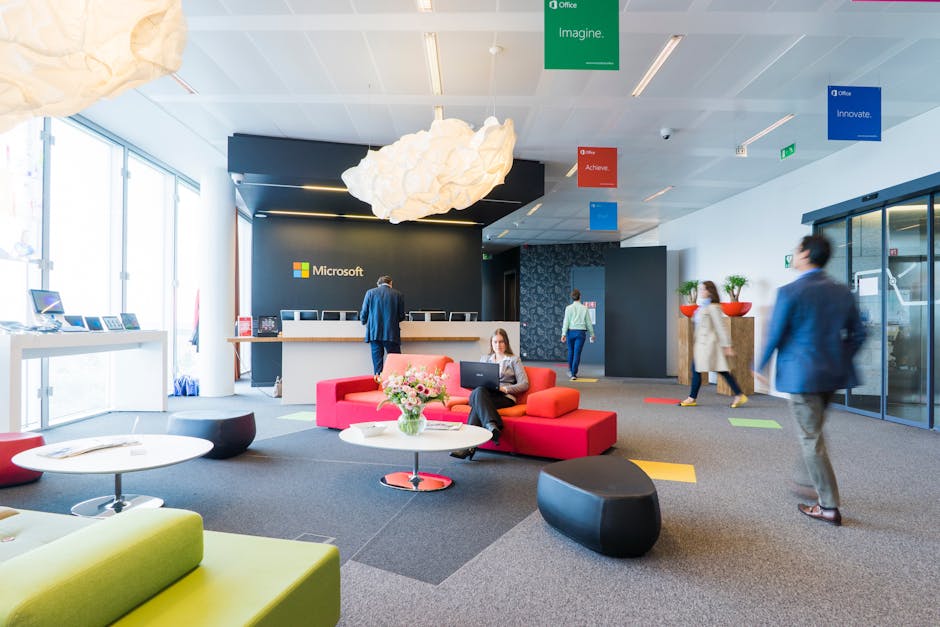5 Essential Visitor Policy Examples for Modern Workplaces
“This article explores five essential visitor policy examples for modern workplaces, offering insights on creating and implementing effective strategies. From security measures to streamlined check-in processes, learn how to enhance your organization's visitor management system. ”

5 Essential Visitor Policy Examples for Modern Workplaces
In today's dynamic business environment, managing workplace visitors effectively is crucial for maintaining security, efficiency, and a positive guest experience. A well-crafted visitor policy sets clear expectations and procedures for both employees and guests. Let's explore five essential visitor policy examples that can help organizations create a safe and welcoming environment.

1. Comprehensive Check-In Process
A thorough check-in process is the foundation of any effective visitor policy. This example focuses on collecting essential information while ensuring a smooth experience for guests.
Key Components:
- Digital sign-in system for quick and efficient registration
- Collection of visitor's name, company, purpose of visit, and host employee
- Photo capture for temporary ID badge
- Brief overview of emergency procedures and facility rules
Implementing a comprehensive check-in process not only enhances security but also creates a professional first impression for your guests.
2. Health and Safety Protocols
In light of recent global events, incorporating health and safety measures into your visitor policy has become essential.
Policy Highlights:
- Pre-screening questionnaire for visitors to complete before arrival
- Temperature checks upon entry (if required by local regulations)
- Mask requirements and social distancing guidelines
- Sanitization stations at entry points and throughout the facility
By prioritizing health and safety, you demonstrate your commitment to the well-being of both visitors and employees.

3. Escort and Access Control
Maintaining control over visitor movement within your facility is crucial for security and confidentiality.
Key Features:
- Requirement for visitors to be escorted by an employee at all times
- Clear designation of areas accessible to visitors
- Use of temporary access cards with limited permissions
- Sign-out process to ensure all visitors have left the premises
This policy example helps prevent unauthorized access to sensitive areas and maintains a secure work environment.
4. Confidentiality and Non-Disclosure
For organizations dealing with sensitive information, a confidentiality clause in the visitor policy is essential.
Policy Elements:
- Brief non-disclosure agreement to be signed during check-in
- Prohibition of photography or recording devices in certain areas
- Guidelines for handling and discussing confidential information
- Consequences for breaching confidentiality rules
Implementing a strong confidentiality policy protects your organization's intellectual property and sensitive data.
5. Vendor and Contractor Management
Managing external service providers requires a specialized approach within your visitor policy.
Key Aspects:
- Separate check-in process for vendors and contractors
- Verification of required certifications or clearances
- Safety briefings specific to the work being performed
- Clear guidelines on equipment usage and work areas
This policy example ensures that external workers adhere to your organization's standards and procedures while on-site.

Implementing Your Visitor Policy
Creating an effective visitor policy is only the first step. Successful implementation requires clear communication and consistent enforcement. Here are some tips to ensure your policy is effective:
-
Train Your Employees: Conduct regular training sessions to familiarize staff with the visitor policy and their responsibilities.
-
Use Technology: Implement a workplace management software solution to streamline the visitor management process.
-
Regular Reviews: Periodically review and update your policy to address new challenges or incorporate feedback.
-
Clear Signage: Display key policy points prominently at entry points and throughout the facility.
-
Feedback Loop: Establish a system for collecting feedback from both visitors and employees to continuously improve your policy.
By implementing these visitor policy examples and best practices, you can create a secure, efficient, and welcoming environment for all who enter your workplace. Remember, a well-executed visitor policy not only enhances security but also contributes to a positive visitor experience, reflecting your organization's professionalism and attention to detail.